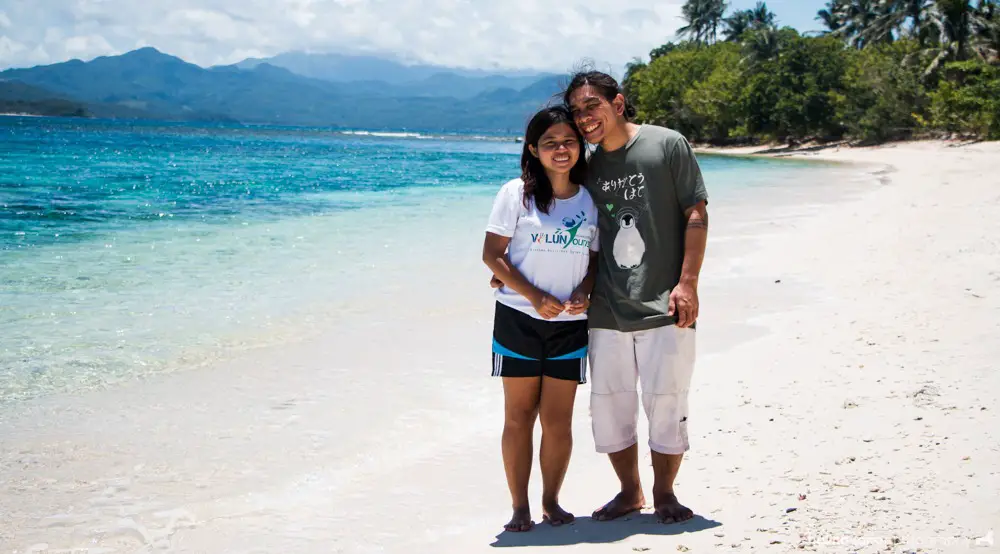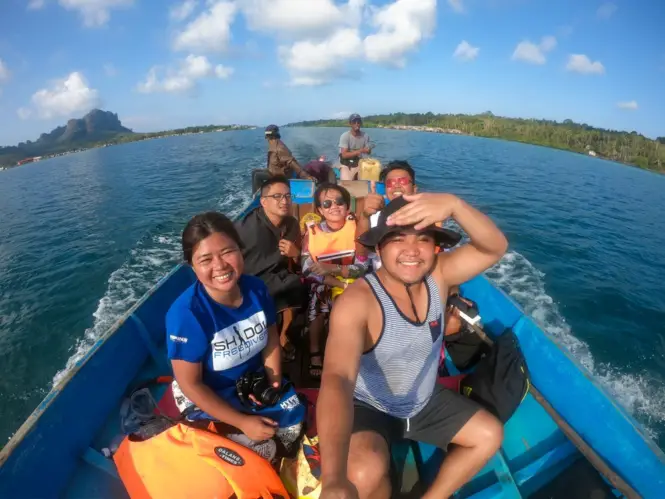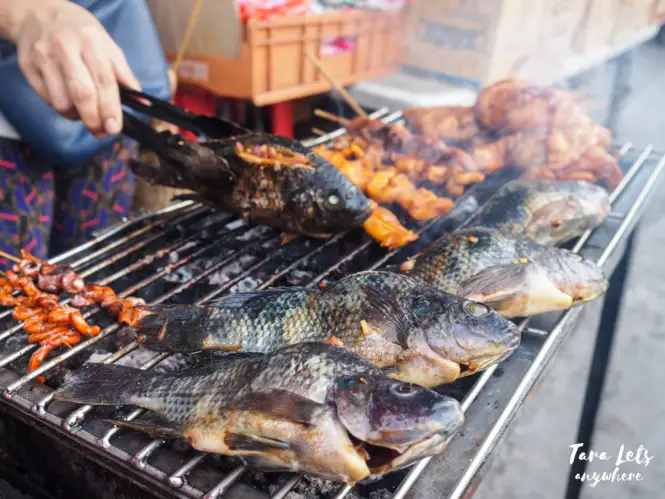
How to Travel the Philippines on a Budget
The Philippines isn’t the cheapest country to visit, but with good planning and knowledge you can still explore this country on a budget. Here are important tips you should know, as well as things you should avoid.
Contents
Costs of traveling to the Philippines
Here are the usual basic rates in the Philippines. These are just approximations. It goes without saying that the rates differ depending on location.
| Accommodations | Budget stays (hostels, dorms, homestays): P300 to 600-700 ($6 to $12-14) Standard room: P700-1200 ($14-24) Hotels: Usually start at P2000-2500 per room ($40-50) |
| Activities | Joiner rate for island hopping: P700-1200 per person ($14-24) Habal-habal tour (guided tour on a motorbike): P500-700 per 1-2 people ($10-14) |
| Transport | Local flight: – Regular fare: P3500-4000++ ($70-80) (one way) – Promo fare: P500-1000 or less ($10-20) (one way) Motorbike rental: P300-500 per day ($6-10) |
| Food | Budget eats: P60-100 per meal ($1-2) |
A safe budget would be P1500-2000 per day including activities.
Budget travel tips
1. How to avoid the “foreigner price”
When you’re traveling in Asia, you’ll find that there’s such a thing as “foreigner price” where you’ll be given a higher markup compared to locals.
The same can be expected in the Philippines. Here are the things you can do to avoid this:
- Do your research so you know the normal rates of goods and services.
- In popular tourist locations, there are standard rates for tours, so you don’t have to worry about being overcharged. There may be a small additional fee for foreign tourists though.
- If buying in the market, look for stalls where the prices are displayed.
- When commuting in the city, use Grab instead of taxis so you are guaranteed a fixed amount.
2. Book your flights months ahead
Sometimes it’s nice not to have a plan and just see how it goes. But when you’re in a budget, it’s safer to have a well-planned itinerary.
One of the things you should know about the Philippines is that it’s an archipelago with thousands of islands. The top tourist locations (Manila, Palawan, Boracay, Cebu, and Bohol) are situated far from each other. You will need to book flights to move around — and flights are not cheap.
It’s best to book months ahead and wait for promos, where you can book return local tickets for P1000 ($20) or even less. The budget airlines you should look out for are Cebu Pacific and AirAsia. Philippine Airlines also hold promo flights, but oftentimes they are still more expensive compared to those two.
Here’s a practical guide on How to Book Cheap Flights in the Philippines.
I read about a blogger who went to Palawan and then Boracay. She decided she didn’t like the crowd in Boracay and wanted to purchase a ticket back to El Nido but the flight prices were staggering, so at the end she didn’t have a choice but to stay. Case in point: do your research well, create an itinerary and stick to it so you can pre-book cheap flights. If you want an itinerary with more leeway, you can always look up ferry schedules if available and plan your route in such a way that you can still change your mind.
3. Stay at budget accommodations
You can find a lot of budget stays in the Philippines. Hostels and dorms offer cheap beds and opportunity to meet other travelers. Some islands offer homestays, where local families rent out their rooms. If you like privacy, you can also find fan rooms for cheap.
A budget stay can cost you anywhere from P300 to P600-700 ($6 to $12-14) per room.
4. Rent a motorbike
Public transport is usually available and usually cheap, but if you’re going to spend the whole day touring, it’s better to charter a vehicle. There is often a habal-habal, a tricycle, or a van available (if you’re in a group) that you can hire to tour you around.
If you’re solo or traveling with another person, renting a motorbike is also a good choice. This will not only save you money, you’ll also get to explore on your own. Motorbike rental is around P300-500 ($6-10) per day.
5. Look for a travel buddy
It’s always more budget-friendly to travel with a buddy or a group. I find that there are places in the Philippines that are suitable for solo travelers, especially those that offer standardized tour rates. (Coron and Dumaguete/Apo Island are some of my favorite solo trips).
However, if you are going to places that are on the off-beaten-path and you need to charter a boat for island hopping (or other activities), you’ll find that it’s more manageable to have someone to share costs with.
There are a lot of FB groups for traveling in the Philippines, so you can easily look for travel buddies on specific dates. Depending on where you want to go, you may also just wait for other passengers at the port used as jump-off point for island hopping.

6. Eat at local restaurants
If you want to avoid the expensive food offered at hotels or resorts, then go to local eateries. These are also called “turo-turo” (literally “point, point”) because the food is displayed and you point which ones you want to order. You can get a rice meal for P60-100 per person ($1-2).
Grilled food (ihaw-ihaw), which is often found on roadside stalls, is also cheap and can easily be paired with rice.

Here are my recommended Filipino dishes for you to try.
For beach trips, what I often recommend is going to the market yourself to buy fresh seafood and other ingredients and cooking it back at your resort (or asking the resort staff to cook it for you for a fee). This is cheaper than ordering seafood at the restaurant and you’ll be enjoying a feast! Take note that not all resorts or homestays allow this, so always ask first.
7. Travel off-season
The Philippines has 2 seasons: dry season and rainy season. The rainy season fall on the ber-months and it’s a cheap time to travel because most hotels & resorts and tours offer discounted rates. You will also get to enjoy popular places with less crowds.
The caveat: typhoons. The country is located in a geographic location that gets around 20 typhoons annually, and most of these typhoons come during ber-months. So there is a chance that your itinerary may be completely ruined by a typhoon — or you’ll get to enjoy a very cheap and pleasant vacation without the crowd.

I have traveled both on and off season, and while I do like the advantages during off-peak season (I hate big crowds), I understand that it can be a deal breaker especially if you have limited days to wait out the rain. What I do recommend is arranging short trips during off-peak season so you have time to watch the weather changes and reschedule if necessary and to go on weekdays during high-peak season.
Things you should avoid
As a budget traveler, these are things you should avoid doing on your trip to the Philippines.
Beg locals for money
There is a debate on begpacking and it’s something that I have discussed with friends as well. Filipinos will probably help you with funds (on account of you being a foreigner), but just know that this is exploitative.
It’s important that you educate yourself first before visiting the country. The Philippines has a huge poverty problem, and even locals who rely on tourism often have to live on small income. So if you decide to visit here and ask for the locals to fund you, then essentially what you’re doing is abusing your privileged status and taking without giving back.
There are ways to keep to your budget and still give to the local community of the places you are visiting.
Skip the required guides
A lot of tourist attractions require tourist guides, especially when there is trekking involved. From stories I’ve heard when backpacking around the country, it’s not uncommon for foreign tourists to skip registration and hiring of a guide because they believe they can do it themselves.
This is problematic for various reasons. If you do this: (1) You are not following the local regulations. (2) When accidents happen, you will need to be rescued and it becomes an inconvenience (and even a risk for people who need to rescue you). (3) You’re cheating the locals out of their income.
Hitchhiking
Hitchhiking is not illegal, but it isn’t common either. I’m including this because I read it in a top travel blog, and I was visibly confused. As someone who has lived here for years, I have never seen people hitchhike.
Public transport is usually everywhere, and in more remote areas, you can always charter a private vehicle or rent a motorbike to get around. Basically, everyone pays for their ride. If for some reason you get stranded or there are no other vehicles, of course hitchhiking is fine — but don’t include it in your strategy to save money.
Do you have other tips on how to travel the Philippines on a budget? Let us know in the comments section below!
What to read next:
Planning a trip to the Philippines? Check out these guides!
- First-Timers Guide to the Philippines
- Best Places to Visit in the Philippines
- Things You Need to Know Before Visiting the Philippines
- Is the Philippines Safe to Visit?
- Off-the-Beaten-Track Destinations in the Philippines
- Suggested 2 Weeks Itinerary in the Philippines
- Suggested 3 Weeks Itinerary in the Philippines
- Philippines Packing List
Others:

Katherine Cortes is a long-time backpacker and a freelance writer/editor. She likes beaches, snorkeling trips, and relaxing staycations (preferably with bath tubs!).



